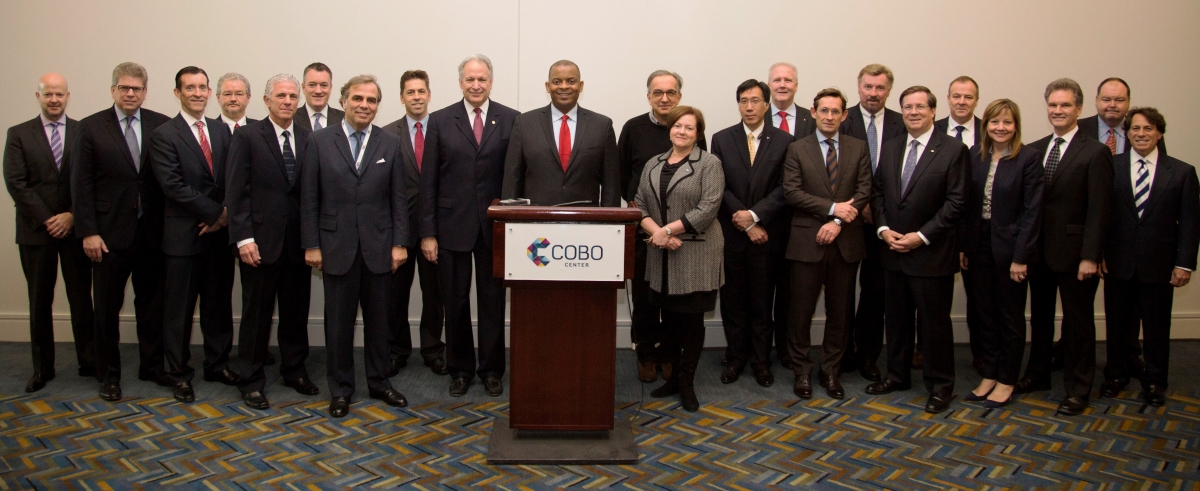DOT, Automakers Agree on Proactive Safety Principles
This is a very exciting time for the auto industry. And I don't just mean the 2016 North American International Auto Show taking place in Detroit.
Yesterday, I announced DOT’s efforts in 2016 to support the safe deployment of autonomous vehicles that carmakers have been developing. And that includes President Obama's proposal to invest $4 billion in pilot programs [external link] to make sure we get it right. And next week, the President will visit Detroit to celebrate a history-making year of record auto sales.

Secretary Foxx walks the Detroit Auto Show with NHTSA Administrator Mark Rosekind.
But there's another side to what is happening in the industry. While we should celebrate the good news, there has been talk of another kind of record: Record numbers of vehicles recalled, and record civil penalties issued by our National Highway Traffic Safety Administration (NHTSA).
Fast Lane readers know the stories. And you might know that Congress recently passed legislation that strengthens NHTSA's enforcement tools. But, you probably also know that real safety means finding and fixing defects before someone gets hurt, rather than just punishing manufacturers after the damage is done.
So that's why I'm excited to announce that, today, DOT and 18 automakers are taking a strong stand --together-- for a new proactive, collaborative approach to safety.

Secretary Foxx, NHTSA Administrator Rosekind with automakers.
We have finalized a historic agreement on a set of broad-ranging actions to help make our roads safer and help avoid the sort of safety crisis that generates the wrong kind of record-setting and headlines. The commitments we make today will help catch safety defects before they explode into massive recalls. They will help improve the quality of data that automakers and NHTSA analyze to identify defects today, and they will find ways to generate better data in the future.
DOT has experience with this kind of approach. In aviation, for example, we already have a model of industry-wide collaboration to support safety. The FAA’s safety management system (SMS) requires a willingness among the airlines to share safety data that can lead to discovering a defect before it hurts anyone. And this has dramatically reduced aviation accidents in our skies.
And, when a recall does become necessary, the commitments we're making today will help us reach consumers and get their vehicles repaired.
Additionally, today’s actions strengthen the industry's efforts to protect vehicle owners from cybersecurity risks. We all know that the performance today's vehicles achieve is due in large part to an increasing amount of computer hardware and software under the hood and behind the dashboard. And the era of automated vehicle technologies we're ushering in will add to that. So we have pledged to work collaboratively to mitigate cyber threats that could pose unreasonable safety risks. We will engage our best cybersecurity minds, share known vulnerabilities and countermeasures, and adopt best practices from within as well as outside of the auto industry.
This coming together of the global automotive industry with DOT and NHTSA to determine how we can make vehicles that are safer than ever before and even safer in the future --this is unprecedented. It was born of us gathering everyone in the same room last fall, and it was the product of an immense amount of work by the companies who have signed onto these principles and by our team at DOT.
It’s a new way of doing business for everybody, and new ways don’t come easily. But that's what you have to do to when the mission you share --making sure Americans can get safely to and from their destination every time they get in their car-- is so important.
You can read this historic agreement at www.transportation.gov/briefing-room/proactive-safety-principles-2016










